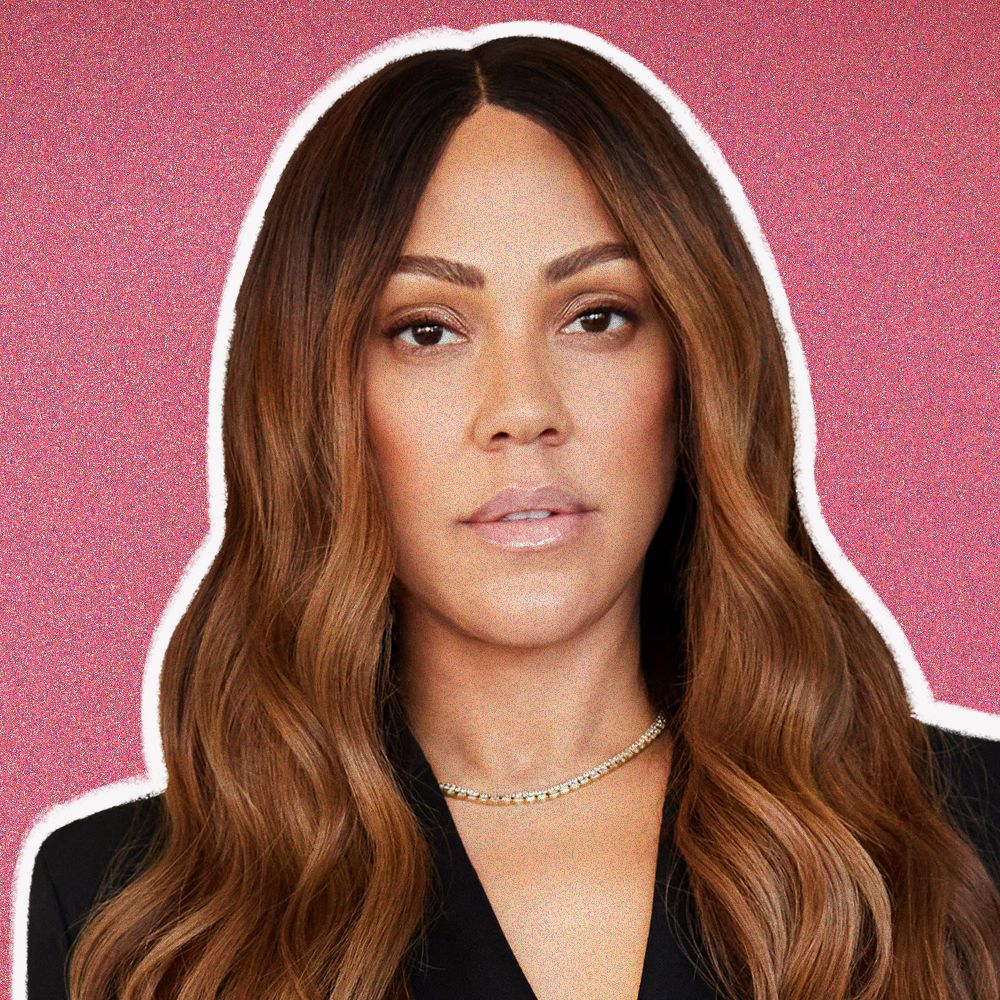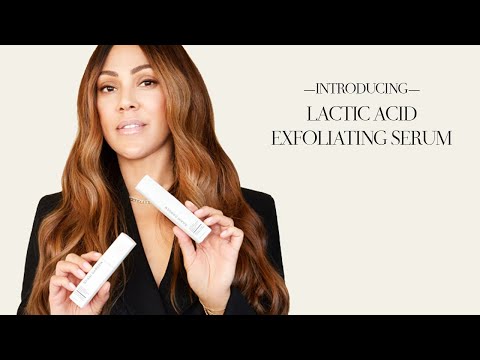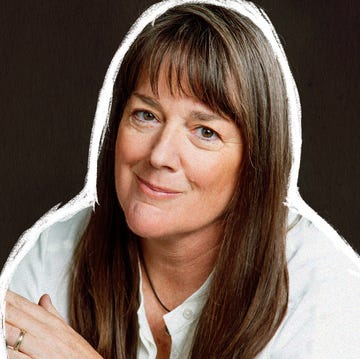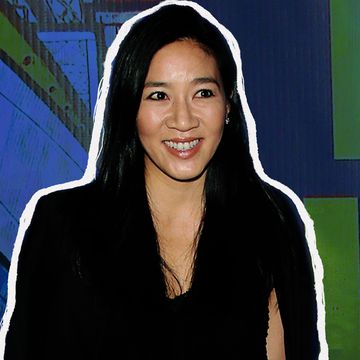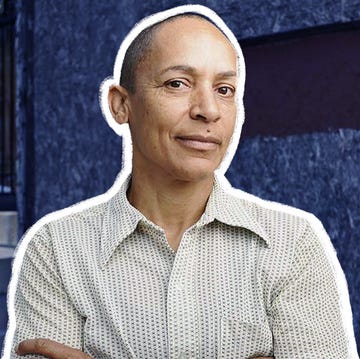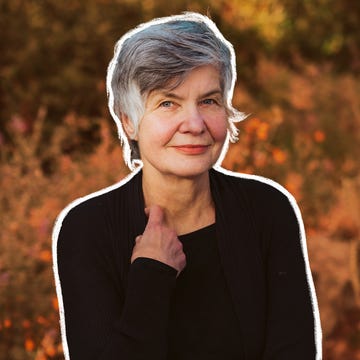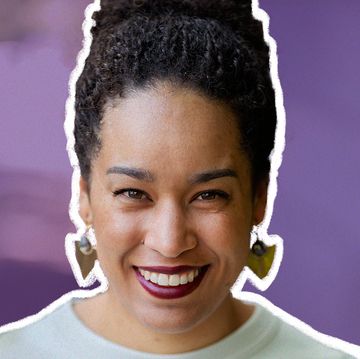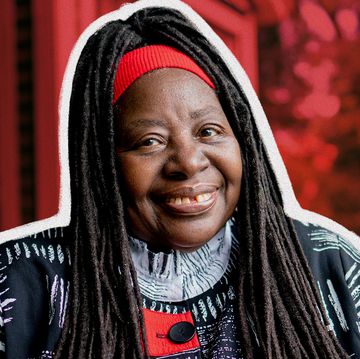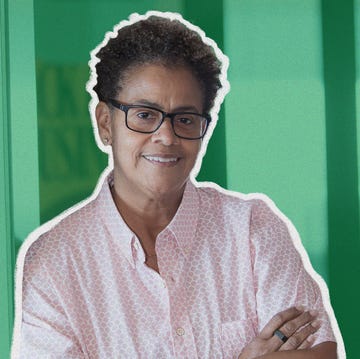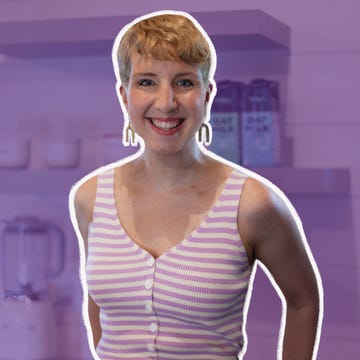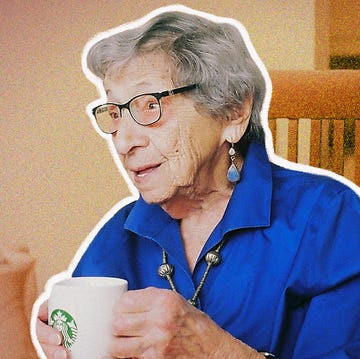In the ongoing Shondaland series Head Turners, we meet interesting women from every facet of life who are crushing it in their careers. From artists and tech mavens to titans of the boardroom, these women are breaking barriers, and they’ll share how you can too.
Shani Darden’s professional destiny was staring her in the face for most of her life. The in-demand Los Angeles aesthetician, whose skincare products have attracted a global fan base since she launched her line in 2018, initially aspired to be a model. When that career choice didn’t pan out, Darden struck gold with a mid-career pivot.
“I’ve always been obsessed [with skincare], but I didn’t really know if that’s what I was going to do,” says Darden, who appeared in music videos for such artists as LL Cool J and Destiny’s Child before she bid her dream of modeling adieu. “One of my friends convinced me to go to school to be an aesthetician — and that was it.”
The social media-savvy mother of two has come a long way from 2013 when she humbly introduced a DIY version of what’s become her best-selling Retinol Reform serum. “It wasn’t a very exciting launch,” she recalls. With a celebrity clientele that now includes Jessica Alba, Kelly Rowland, and Chrissy Teigen, plus prominent positioning on Sephora shelves, Darden has since moved her operation out of her home and into a sleek studio in Beverly Hills designed by interior designer Jake Arnold.
A hands-on approach that prizes formulation and personalization remains at the core of Darden’s business. She’s adapted high-tech touches from her signature in-person facial treatments, such as LED light therapy, into products for at-home use. And she recently began mentoring other BIPOC women in the beauty industry, focusing efforts on the likes of entrepreneur Sienna Brown, who launched her Glosshood lip moisturizer to acclaim.
Darden recently spoke with Shondaland about how she swapped her on-screen aspirations for skincare, what she learned from independently starting her brand, and why her kids couldn’t care less about social media.
JESSICA RITZ: What brought you to Los Angeles and into the skincare field?
SHANI DARDEN: I’m from upstate New York. I think I was 23 when I moved out here. I was modeling when I was younger. I was in Canada, and someone said, “Move to L.A. You’re going be this huge model.” I came here [and] immediately realized this isn’t really the place for models — and I wasn’t going to be one. I did music videos and realized I didn’t want to do that. It took me a minute to figure out that [my career] was going to be skincare.
JR: Did you have any other notions of working in the beauty space?
SD: I don’t think so. When I was growing up, I wanted to be a Mary Kay lady. It was always right there in front of me, but I didn’t know. My friends that I grew up with all joke like, “How did you not know?” Once I got into it and went to school, I knew immediately this is 100 percent what I’m supposed to do.
JR: What did that look like early on for you?
SD: I started working with a spa in Los Angeles that I knew was going to open. It was supposed to be, like, the biggest deal ever. A friend helped me get a job there. I worked as a receptionist because I figured they’re going to let me in right after I finish school. I ended up going to school, and [the owner] was like, “No way.”
All her aestheticians had years of experience, so one of the aestheticians helped me get a job working for a dermatologist. When I worked for her, that’s where I got all my experience. Then, I went back and started working at that spa again. I jumped around a lot.
[When] I was pregnant with my second child, one of my friends was like, “You have this empty back office in this rental house. You should just set something up there.” I did, and it exploded. That’s when I did my first product.
JR: Did you have any mentors along the way?
SD: The aestheticians that I worked with were really amazing. They really helped me a lot and guided me with everything. Jessica Alba had become a really good friend of mine. I was watching her take over the world. Those were people that I had around me. I definitely had the vision, and I knew that it was going to take a lot of hard work.
JR: How did you launch your first product?
SD: I wanted to make a retinol, [but] I didn’t have any money, so I went to a chemist that I found. We made it, and it was in really awful packaging. I put dumb stickers on it. Every day, all by myself, I would fold the boxes, do all the bags, and ship everything from my house.
JR: What mistakes did you make along the way that you learned from?
SD: I don’t think they were mistakes. I just didn’t have any money. I didn’t have a lot of options [on] what I could have done, like my packaging. I was just really lucky that I made such a great product. I always put a lot of effort into making products.
JR: How did you stand out in such a crowded field?
SD: Many people just go and get a formula from a lab and put their name on it. There’s not a lot of thought put into it. Everything that I have made is not for everyone’s skin type, but it’s really good. I’m not a pushy person in any way. If you come in, I’m not the person that’s going to push all my products on you. People trust me and my process.
JR: You’re still focused on your personal client service. How do you strike that balance of becoming a brand but also being a skincare provider?
SD: Giving facials is my comfort zone. It’s like my Xanax. For me, that’s No. 1. I just don’t know that I would be able to make products without having that interaction with my clients, seeing their skin, and knowing what they need. It’s really important for me to build the brand that way.
JR: What are some of the trends or movements in the beauty industry that you think are exciting and you’re happy to see?
SD: Not [with] everyone, but there’s less filler and Botox. Overall, people are starting to realize less is more. It’s great that people now are so focused on sunscreen. I’ve seen it even more recently with this whole craziness of mineral sunscreen.
JR: You sometimes include your 9- and 14-year-old daughters in your social media. How do you talk about social media and beauty standards as a parent?
SD: I am really lucky that I have two kids that really don’t care at all. I usually have to bribe them to be on Instagram with me. Both of them don’t have phones. We begged my 14-year-old to carry a phone. I’ve lucked out. As far as beauty, my little one does not care in any way about cleansing her face or anything, whereas my older one is very on it. She has a full routine. She knows what she’s doing. That being said, she’s an old soul but really young in that she would never wear makeup. I hope it’s forever, but it might just be for now.
JR: How have you amplified the voices of other entrepreneurs in the field?
SD: There are a lot of platforms that have come out to support Black-owned businesses. Great. You talk about it, but nothing happens. I was like, “I’m really going to try my hardest to help in any way I can.” There’s three [brands] I’ve been helping, but Sienna [Brown of Glosshood], I just fell in love with. My goal with her was to see if I can blow her up in any way possible to make things move forward. I definitely believe in her and know she can do well. You can’t just talk about it. You have to actually do something. So, I’m trying.
Jessica Ritz is a Los Angeles-based writer who has contributed to Architectural Digest, Bon Appétit, Coastal Living, Los Angeles Times, Palm Springs Life, and Los Angeles magazine. Follow her on Twitter @jessnritz.
Get Shondaland directly in your inbox: SUBSCRIBE TODAY
